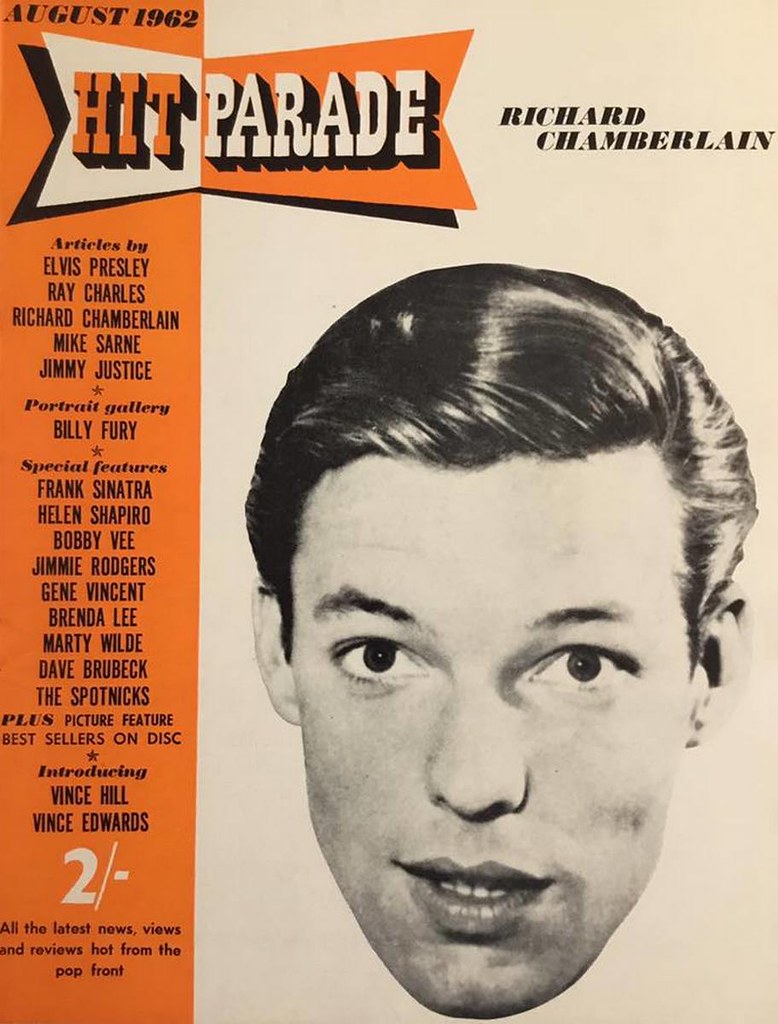
Richard Chamberlain, an actor whose career spanned over six decades, transitioned from a 1960s television heartthrob to an acclaimed serious stage performer, and ultimately became known as the “king of the miniseries.” His passing on Saturday, March 29, in Waimanalo, Hawaii, at the age of 90, following complications from a stroke, marks the end of a prolific and influential life in entertainment. Chamberlain, who would have celebrated his 91st birthday two days later, carved out a unique space in popular culture, charming audiences across generations with his versatility and compelling presence.
His journey through Hollywood and beyond was not merely a succession of roles but a testament to his adaptability and enduring commitment to his craft. From the demanding schedule of network television to the immersive experience of long-form dramatic series and the rigorous discipline of classical theater, Chamberlain embraced each challenge with an earnestness that resonated deeply with viewers and critics alike. His multifaceted contributions, celebrated by three Golden Globe Awards and four Emmy nominations, highlight a career that continually evolved, reflecting the changing landscape of television and film itself.
This in-depth retrospective will chronicle the pivotal moments and defining roles of Richard Chamberlain’s extraordinary career, delving into his early life, his formative experiences, and the strategic choices he made to continually reinvent his artistic identity. We will explore how he navigated the intense glare of public adoration, pursued artistic integrity on international stages, and ultimately embraced a transparency about his personal life that, decades earlier, he believed would be impossible. His story is one of sustained excellence, personal courage, and an indelible impact on the narrative arts.

1. **Early Life and Academic Foundations**Born George Richard Chamberlain on March 31, 1934, in Los Angeles, California, his formative years were spent in Beverly Hills. He often noted that he grew up on “the wrong side of Wilshire Boulevard,” a subtle distinction that underscored a more conventional upbringing compared to the opulence typically associated with the famed city. His father, Charles, worked as a salesman for supermarket furnishings, while his mother, Elsa, was a homemaker and talented pianist. He was the younger of two sons, growing up in an “extremely normal neighborhood.”
Chamberlain attended Beverly Hills High School, where his burgeoning interest in performance first took root. He appeared in various school plays, including a production of “I Remember Mama,” finding a distinct pleasure in the theatrical realm. He candidly shared his early sentiments, stating, “I wasn’t that attracted to real life, I liked fantasy life,” and further elaborating, “I liked role-playing and all that stuff. I was really set up to be an actor, because that was when I was happiest, essentially being someone else.” This early inclination toward escaping into character laid the groundwork for his future career.
His academic pursuits led him to Pomona College in Claremont, California, where he initially pursued a bachelor’s degree in art history and painting. However, the allure of the stage proved strong; in his freshman year, he joined a student theater group, discovering a profound connection to acting. It was during his senior year, after receiving enthusiastic applause for his performance as Bluntschli in George Bernard Shaw’s play “Arms & the Man,” that he definitively decided to fully pursue an acting career, a pivotal moment that redirected his artistic trajectory from visual arts to performance.
Read more about: From Stardom to Silence: The One Decision That Dramatically Derailed These Actresses’ Hollywood Careers
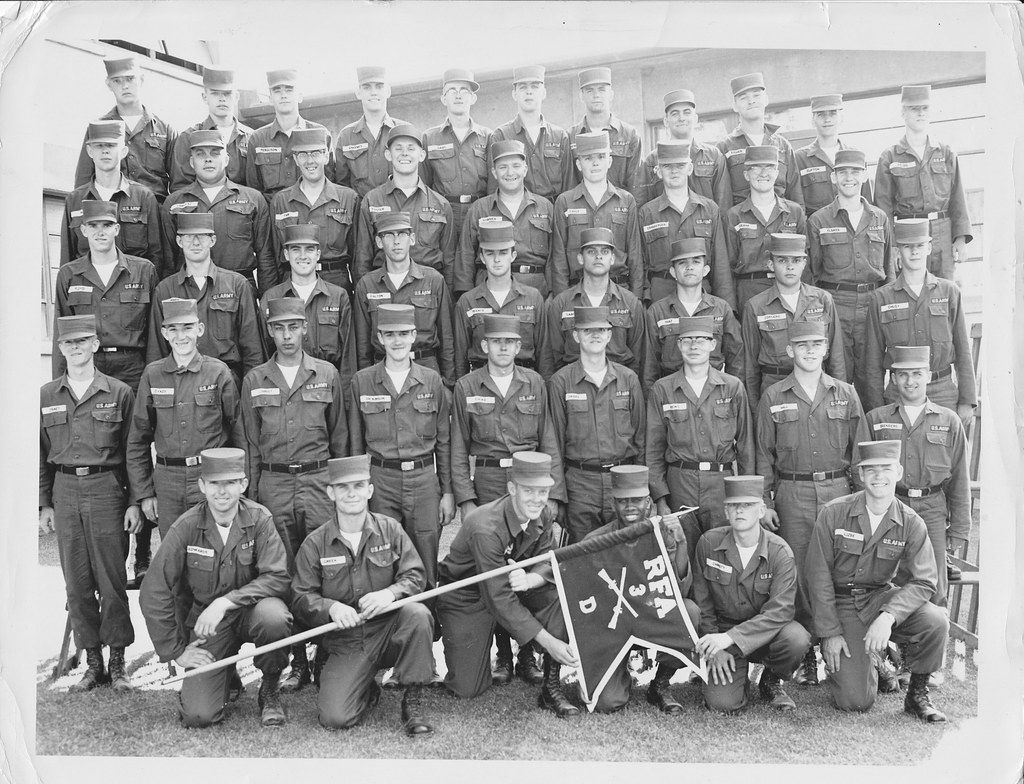
2. **Military Service and Early Career Beginnings**Following his collegiate decision to embark on an acting career, Chamberlain’s plans were briefly interrupted by national service. A talent scout from Paramount Pictures had approached him after seeing his student productions, but concurrent with these discussions, he received a draft notice. This led to a two-year enlistment in the U.S. Army, where he served 16 months in Korea, shortly after the cessation of the Korean War, achieving the rank of staff sergeant. This period of military service undoubtedly provided a grounding experience before the intense spotlight of his impending fame.
Upon his return to California, Chamberlain dedicated himself to formal training, enrolling in acting and voice classes to hone his craft. He diligently sought representation and soon secured an agent, Monique James, a crucial step in navigating the competitive landscape of the entertainment industry. Demonstrating a proactive approach to his career, he also co-founded Company of Angels, a Los Angeles theater group, providing himself and fellow emerging artists with a platform for performance and development.
His first professional acting credit arrived in 1959 with a guest appearance on the acclaimed anthology television series, “Alfred Hitchcock Presents.” In this role, he shared the screen with veteran actor Raymond Massey, who portrayed his father. This initial exposure was quickly followed by appearances on other popular American television series of the era, including “Gunsmoke,” “Mr. Lucky,” and “Riverboat,” steadily building his resume and preparing him for the breakthrough role that would soon catapult him to international stardom.
Read more about: Steve Lawrence: Remembering an Entertainment Icon’s Illustrious Life, and His Final Battle with Alzheimer’s Disease
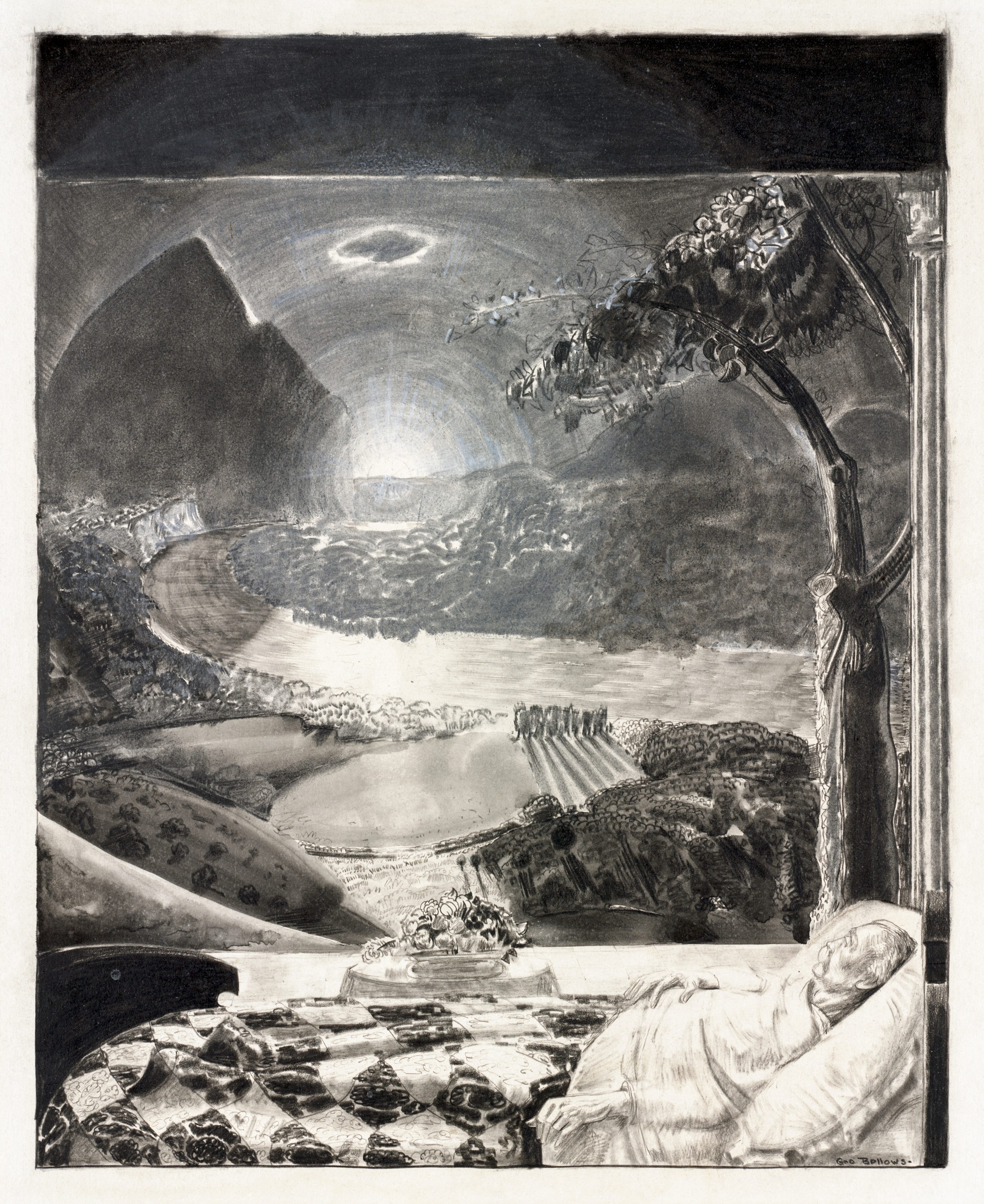
3. **The Phenomenon of “Dr. Kildare”**In 1961, Richard Chamberlain landed the role that would irrevocably alter his career and cement his status as a national heartthrob: Dr. James Kildare in the NBC medical drama of the same name. Portraying an idealistic young intern under the mentorship of the seasoned Dr. Leonard Gillespie, a role played by Raymond Massey—who had previously approved Chamberlain for the part—he quickly became a cultural phenomenon. His California-blond, boyish good looks and understated charm captured the public’s imagination, turning him into an overnight star.
The series, which aired from 1961 to 1966, was an immediate and immense success. During its five-year run, Chamberlain was reportedly receiving an astonishing 12,000 fan letters a week, a volume of mail unprecedented even for established stars like Clark Gable at MGM. He recounted the experience as his “absolute, total dream come true,” expressing profound happiness with the attention. The show’s popularity transcended national borders, taking off “all around the world,” as he noted in a 2021 interview, firmly establishing his image as a beloved television personality.
His portrayal of Dr. Kildare earned him his first significant accolade, a Golden Globe Award for Best Male TV Star in 1963. The role was not merely about fame; it offered him a unique form of personal solace. He later reflected, “I went through life pretending to be perfect, and that helped me play Dr. Kildaire, because he was close to perfect.” Further cementing his teen idol status, he also sang the theme from “Dr. Kildare,” titled “Three Stars Will Shine Tonight,” which scored a Billboard Hot 100 top-10 hit when released as a single, showcasing another facet of his burgeoning entertainment career.
4. **Expanding Horizons: Early Film Career**While “Dr. Kildare” brought him widespread recognition, Richard Chamberlain also sought to expand his artistic range by venturing into film. His cinematic debut came in 1960 with “The Secret of the Purple Reef,” a crime drama set in the Caribbean. Initially, some of his film roles, such as “Joy in the Morning” (1965), consciously leveraged his popular Dr. Kildare image by casting him as a young doctor, though these did not always call for complex characterizations.
However, he soon began to take on more diverse and, at the time, surprising roles that demonstrated a deeper dramatic capability. He delivered a memorable performance as Julie Christie’s dangerous husband in Richard Lester’s “Petulia” (1968), a psychological drama that allowed him to shed his wholesome television persona. This was followed by his portrayal of Octavius in “Julius Caesar” (1970), where he acted alongside esteemed figures like Charlton Heston and Jason Robards, indicating a growing presence in significant theatrical adaptations.
Chamberlain continued to challenge perceptions with his role as Tchaikovsky in Ken Russell’s biographical film “The Music Lovers” (1971), a performance that further showcased his dramatic intensity. He also embraced adventure, embodying Aramis, one of the iconic Musketeers, in Richard Lester’s swashbuckling adaptation of “The Three Musketeers” (1973) and its subsequent sequel, “The Four Musketeers” (1974), alongside Raquel Welch and Oliver Reed. His versatility was further evident in his role as the cowardly electrical engineer Roger Simmons in the star-studded disaster film “The Towering Inferno” (1974), and in Peter Weir’s critically acclaimed Australian drama “The Last Wave” (1977), where he played an Australian lawyer transformed by an encounter with Aboriginal culture. These diverse roles firmly established his presence on the big screen, moving him beyond the singular identity of Dr. Kildare.
Read more about: Alright, Alright, Alright: Unpacking Matthew McConaughey’s Extraordinary Metamorphosis from Rom-Com Royalty to Oscar-Winning Icon

5. **Shaking the “Pretty Boy” Image: A Foray into Serious Stage Acting in England**As the popular run of “Dr. Kildare” concluded in 1966, Richard Chamberlain, acutely aware of the risk of being typecast as a “pretty boy” television doctor, made a deliberate and significant career move: he relocated to England. This decision was a testament to his ambition to cultivate a reputation as a serious actor, committing himself to rigorous theatrical training and the challenging demands of classical stage roles. It was a conscious effort to shed the commercial veneer of his early fame and delve into the artistic depths of performance.
His dedication culminated in 1969 when he took on the iconic role of Hamlet at the Birmingham Repertory Theatre. This undertaking was met with considerable skepticism from British critics, who were accustomed to the American television personality. However, Chamberlain’s performance quickly dispelled these doubts, earning him widespread admiration. Critics described his portrayal as “assured, graceful and plucky,” a powerful endorsement of his dramatic capabilities and a clear indication of his successful transition into a different caliber of acting.
Indeed, a review in The Times of London unequivocally declared, “Anyone who comes to this production to scoff at the sight of a popular American television actor, Richard Chamberlain, playing Hamlet will be in for a deep disappointment.” This critical validation marked a pivotal turning point, demonstrating his commitment to the craft over celebrity. This foray into English theater served as a profound artistic education and a crucial step in transforming his public image, distinct from his earlier, less fortunate Broadway debut in the disastrous 1966 musical adaptation of “Breakfast at Tiffany’s,” which closed in previews and underscored the need for such a reorientation.

6. **The Advent of the “King of the Miniseries”**After five years spent cultivating his theatrical prowess in England, Richard Chamberlain returned to the United States, poised for a new phase of his career. While he continued to take on notable stage and screen roles, it was on television, specifically through the burgeoning miniseries format, that his major star status was not only restored but elevated to an unprecedented level. This period coincided with a significant shift in television programming, as networks began investing heavily in long-form narratives.
Miniseries represented a groundbreaking evolution in television, characterized by their “feature-film ambition with the many hours required to tell big stories in great detail.” This format allowed for expansive storytelling, character development, and intricate plots that were impossible within the constraints of weekly episodic television or standard feature films. Viewers, seeking deeper engagement, “began a brief but intense romance with this new programming form,” creating a fertile ground for actors who could anchor these ambitious productions.
Chamberlain’s association with this phenomenon began earnestly with his role as a Scottish trapper, Alexander McKeag, in the ensemble cast of the 12-part “Centennial” in 1978. This epic saga, based on James Michener’s novel, offered a glimpse into his capacity for sustained, nuanced performance across many hours of television. It was in the 1980s that the Associated Press formally dubbed him the “king of the miniseries,” a moniker that accurately reflected his omnipresence and unparalleled success in this defining genre of the era. This title would be further cemented by his subsequent, even more iconic, roles.
Read more about: Beyond the Matinee Idol: Ranking Richard Chamberlain’s Most Unforgettable Roles

7. **”Shōgun”: A Landmark Television Achievement**The phenomenon of Richard Chamberlain as the “king of the miniseries” hit its full force with the 1980 production of “Shōgun.” This epic miniseries, adapted from James Clavell’s best-selling novel, saw Chamberlain starring as John Blackthorne, a dashing 17th-century English navigator whose ship wrecks off the coast of feudal Japan. His portrayal of the British seaman, captured by samurai and subsequently rising in stature to become an advisor to the titular feudal military ruler, captivated audiences worldwide and introduced him to a new generation of fans.
“Shōgun” was a monumental production, with Chamberlain spending six months filming in Japan, an immersive experience that underscored the authenticity and scope of the series. He spoke fondly of his Japanese co-stars in an interview with the Television Academy, noting, “They were all extraordinarily wonderful, and you think coming from say no drama or kabuki which was big and theatrical that you might run into sort of over-the-top actors but they weren’t. They were great.” This collaboration contributed significantly to the miniseries’ critical and popular success, making it one of the most successful miniseries in television history.
Chamberlain’s performance as John Blackthorne earned him another Golden Globe Award for Best Actor in a Mini-series or Motion Picture for TV in 1981, along with an Emmy nomination, solidifying his stature as a leading dramatic actor. The miniseries was a global television event, seducing audiences with its intricate plot, historical detail, and Chamberlain’s compelling central performance. His role in “Shōgun” became synonymous with the golden age of miniseries, a testament to his commanding presence and the format’s capacity for grand storytelling, a role later notably reprised by Cosmo Jarvis in the 2024 adaptation, further underscoring its enduring cultural impact.

8. **”The Thorn Birds”: Solidifying Miniseries Stardom**Richard Chamberlain’s reign as the “king of the miniseries” reached new heights with his captivating portrayal of Father Ralph de Bricassart in the 1983 epic, “The Thorn Birds.” This Australian-set saga, adapted from Colleen McCullough’s best-selling novel, explored the forbidden love between a Catholic priest and a young woman named Meggie Cleary, igniting a cultural phenomenon. Aired over four nights in March 1983, it became a television landmark.
The role demanded a nuanced depiction of internal conflict and spiritual struggle. Father Ralph, a man torn between his vows and his passionate love for Meggie, became one of Chamberlain’s most iconic characters. He described the central dynamic, noting, “It was one of the great love affairs in the history of the world, except God was in there between them,” capturing the tragic essence of their relationship. This intense dramatic portrayal showcased Chamberlain’s ability to imbue characters with both vulnerability and strength.
“The Thorn Birds” was a colossal success, drawing an astonishing 110 million viewers, making it the second most-watched miniseries ever after “Roots.” Its widespread appeal and critical acclaim further cemented Chamberlain’s status, earning him his third Golden Globe Award for Best Actor in a Mini-series or Motion Picture for TV in 1984. The enduring power of his performance led him to reprise the role in the 1996 television movie, “The Thorn Birds: The Missing Years,” underscoring its lasting impact.
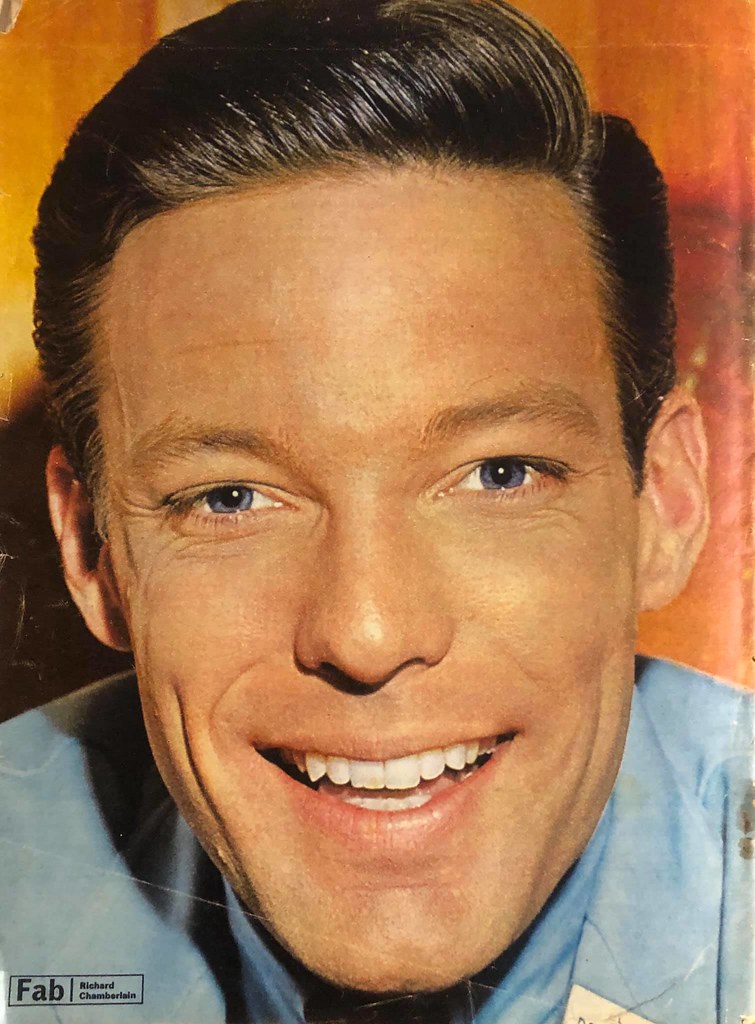
9. **Pioneering the “Bourne Identity” on Screen**Before the high-profile film series starring Matt Damon, Richard Chamberlain had the distinction of bringing Jason Bourne to the screen for the very first time. In 1988, he starred as the titular character in a two-part television miniseries adaptation of Robert Ludlum’s 1980 novel, “The Bourne Identity,” opposite Jaclyn Smith. This pioneering portrayal introduced the amnesiac assassin to a wide audience, establishing the character’s complex origins.
Chamberlain’s performance showcased another dimension of his acting prowess. Known predominantly for romantic leads, his embodiment of a character embroiled in espionage, mystery, and physical combat demonstrated his range beyond the “pretty boy” image he had consciously worked to shed. The miniseries format allowed for a comprehensive exploration of Bourne’s fragmented memory and dangerous quest, adhering closely to Ludlum’s narrative depth.
The television miniseries was a significant precursor to the Bourne franchise that would later redefine the spy thriller genre in cinema. Chamberlain’s initial interpretation provided a foundational dramatic understanding of Jason Bourne, paving the way for future adaptations. His involvement underscored the flexibility of his career choices, as he consistently sought roles that challenged audience expectations and allowed him to delve into diverse narrative worlds.
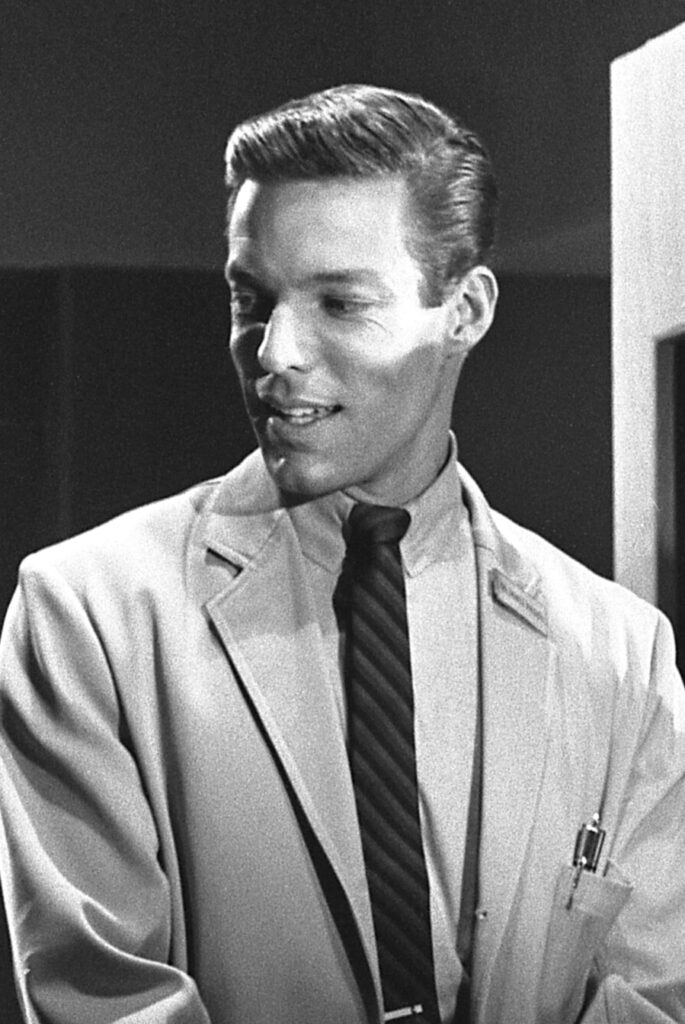
10. **Distinguished Contributions to Theater**While Richard Chamberlain achieved monumental success in film and television, his dedication to the stage remained a cornerstone of his artistic life. After his transformative period in England, his acclaimed portrayal of Hamlet in 1969 was merely the beginning of a distinguished theatrical career that solidified his reputation as a serious and versatile actor. He continually returned to the rigor and immediate feedback of live performance.
Throughout the 1970s, Chamberlain received significant recognition for his stage work, including two Drama Desk Award nominations. One was for his nuanced performance as Lawrence Shannon in Tennessee Williams’s “The Night of the Iguana” (1976) at the Circle in the Square. Another came in 1978 for his portrayal of Wild Bill Hickok in “Fathers and Sons” at the Public Theater, a role he affectionately referred to as his favorite, highlighting his enjoyment of complex figures.
His commitment to Broadway also brought critical respect. After an early, less fortunate debut, he returned with assured performances in “Blithe Spirit” (1987) and a successful run as Henry Higgins in “My Fair Lady” (1993), a role he also toured nationally. He also took on Captain von Trapp in “The Sound of Music” as a replacement (1999) and embraced the comedic demands of King Arthur in the national tour of “Spamalot.”
In his later years, Chamberlain continued to engage with the New York stage, receiving appreciative reviews for his appearance in David Rabe’s dark comedy “Sticks and Bones” in 2014. The Times characterized his performance as the family priest as “wonderfully unctuous,” a testament to his enduring ability to deliver memorable characterizations, distinct from the transient glare of celebrity.
Read more about: Steve Lawrence: Remembering an Entertainment Icon’s Illustrious Life, and His Final Battle with Alzheimer’s Disease
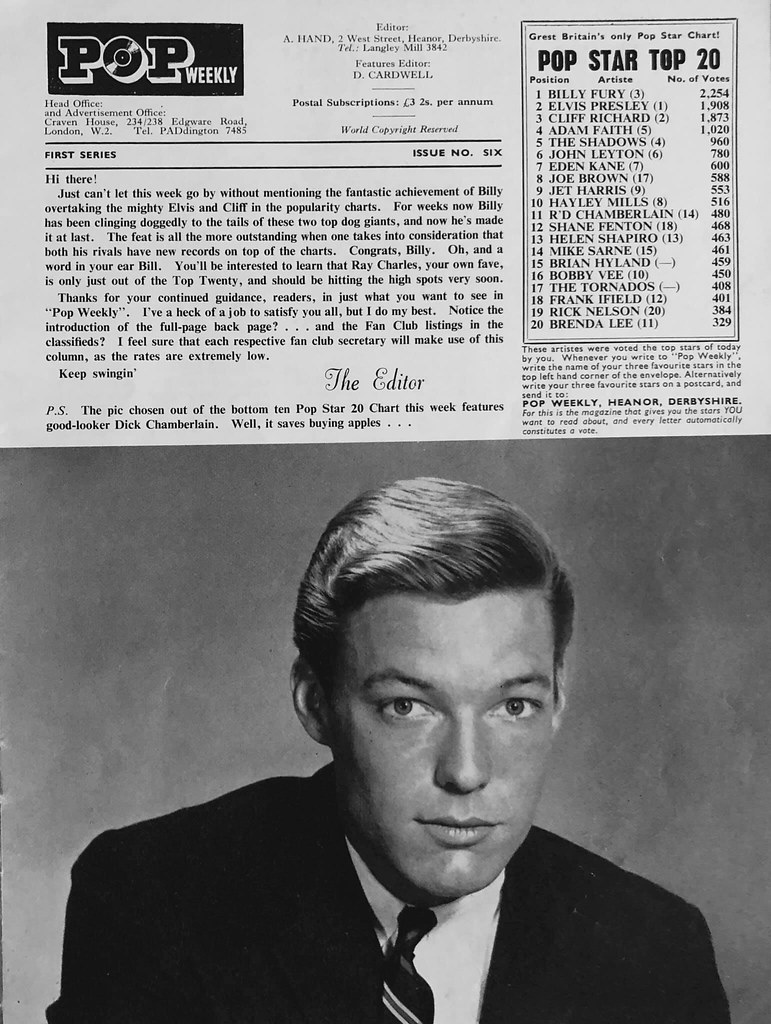
11. **A Brief but Successful Foray into Music**Beyond his formidable acting career, Richard Chamberlain also carved out a notable, albeit brief, presence in the music industry, particularly during the height of his “Dr. Kildare” fame. His foray into recording served to amplify his status as a multifaceted entertainer and teen idol, captivating audiences with his vocal talents alongside his acting charisma. This crossover success was a testament to his widespread appeal in the 1960s.
His most widely recognized musical achievement stemmed directly from his television success: he sang the theme from “Dr. Kildare,” titled “Three Stars Will Shine Tonight.” Released as a single, the song impressively scored a Billboard Hot 100 top-10 hit, a significant accomplishment that underscored his burgeoning popularity and broadened his artistic reach.
Chamberlain’s musical endeavors were not limited to a single hit. He also released a successful cover of “All I Have to Do Is Dream” in 1962, further demonstrating his vocal capabilities and appealing to the romantic sensibilities of his audience. His brief but impactful career as a recording artist, primarily focusing on romantic ballads, even garnered him a Grammy nomination, showcasing a harmonious blend of his acting persona and singing talent.
Read more about: Chris Pratt’s Ascent: From Sitcom Charmer to Global Megastar—A Deep Dive into the Man Behind the Marvel Legend

12. **Later Television and Film Appearances**As his career progressed beyond the iconic miniseries era, Richard Chamberlain maintained a visible presence across television and film, often transitioning into guest and supporting roles. This period reflected his adaptability and willingness to engage with evolving narrative forms and contemporary genres, ensuring his continued relevance throughout the 1990s and into the 21st century.
He appeared in various films and TV movies during the 1990s, including “Birds of Prey” and “The Lost Daughter.” The new millennium brought a series of notable guest appearances on popular sitcoms and comedies, showcasing his comedic timing. He charmed audiences on “Will and Grace,” lent his talents to “The Drew Carey Show”—even appearing in full drag—and featured in “Desperate Housewives.”
Chamberlain’s later television work also included dramatic roles on series such as “Nip/Tuck” and “Brothers & Sisters,” where he notably played a former lover of Ron Rifkin’s character, signaling new openness in his choices. He made cameos in films like “I Now Pronounce You Chuck & Larry” (2007) and guest-starred on crime series like “Leverage” and “Chuck.” His enduring cult status was cemented by a brief cameo in David Lynch’s 2017 “Twin Peaks” revival.
His final screen credits included an appearance as an ailing rock-club owner in the indie comedy film “We Are the Hartmans” (2011), and his last film role as an acting coach in the mystery “Finding Julia” (2019). These varied roles underscored his continuous engagement with the craft and his ability to adapt to changing industry demands.
Read more about: Beyond Denise Huxtable: Uncovering the Real Story of Lisa Bonet’s Dramatic Departure from The Cosby Show and A Different World
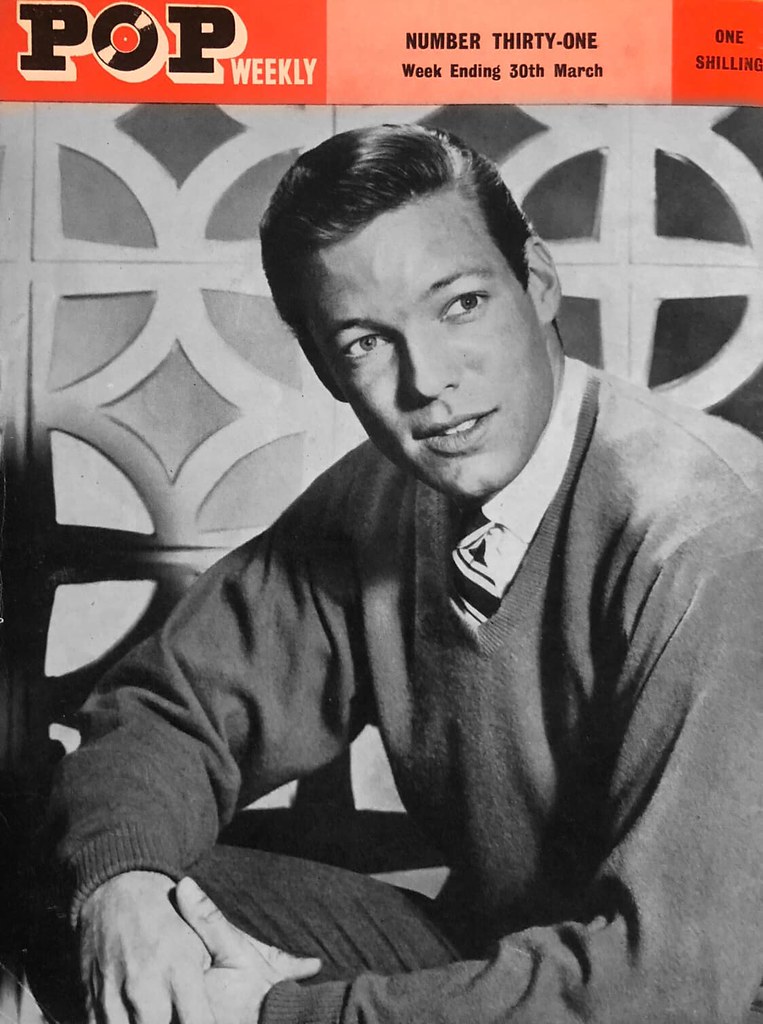
13. **The Profound Impact of His Public Coming Out**In 2003, Richard Chamberlain made a deeply personal and significant revelation in his memoir, “Shattered Love,” publicly acknowledging that he was gay. This disclosure, made when he was 69, marked a profound turning point in his life, allowing him to shed decades of pretense and live authentically. He articulated his decision, stating, “I can talk about it now because I’m not afraid anymore,” signaling an end to a long-held secret.
For much of his life, Chamberlain lived with the profound internal conflict of his sexuality in a societal climate deeply unwelcoming to gay public figures. He candidly shared the immense pressure, reflecting, “When you grow up in the ’30s, ’40s and ’50s being gay, it not only ain’t easy, it’s just impossible.” He continued, “I assumed there was something terribly wrong with me,” revealing the pervasive shame and self-dislike.
He often spoke of the “double life” he felt compelled to lead, maintaining a public image that concealed his true self, which he once described as “part of the game” for a performer. The fear that revealing his sexuality would irrevocably damage his career was a constant concern, influencing his role choices and public persona.
By the time of his coming out, social attitudes toward gay performers had shifted considerably, and the public’s reaction was largely one of “matter-of-fact acceptance.” This embrace allowed Chamberlain a newfound freedom, reflected in some of his later roles where he appeared to delight in portraying characters who were gay or played with gender stereotypes. His journey illuminated the personal cost of societal prejudice and the liberating power of truth.
Read more about: You Won’t Believe How These 12 Supporting Characters Stole The ENTIRE Movie!
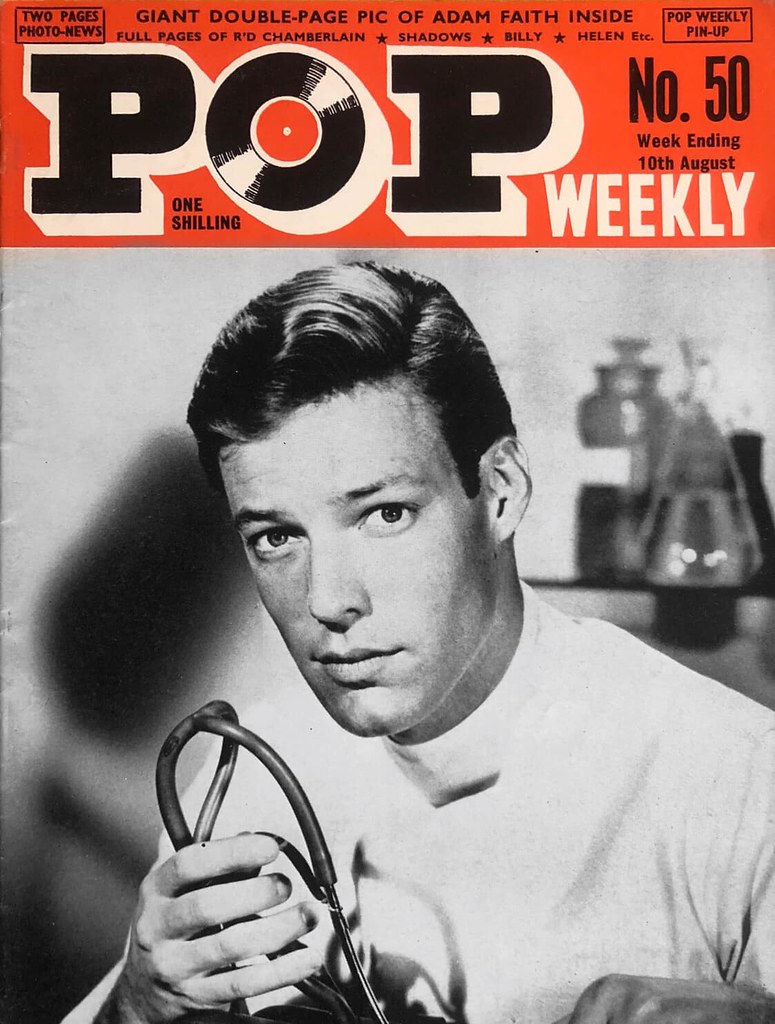
14. **Enduring Legacy, Personal Advocacy, and Final Years**Richard Chamberlain’s legacy extends far beyond his roles as a television heartthrob and the “king of the miniseries.” It encompasses a career defined by continuous evolution, artistic integrity, and profound personal courage. His contributions not only shaped television drama but also offered a testament to an actor’s unwavering commitment to his craft, consistently seeking new challenges and dimensions in his performances.
Beyond the stage and screen, Chamberlain was also a passionate advocate for ecological matters. A subject particularly close to his heart was the preservation of the Tuolomne River in California. His dedicated lobbying efforts were instrumental in placing the river under the National Wild and Scenic System, a legislative measure designed to protect its pristine natural state. This advocacy revealed a man deeply committed to environmental stewardship, using his public platform for meaningful causes.
After making Hawaii his full-time residence in 1990, Chamberlain re-embraced an earlier artistic passion: painting. He regularly exhibited his work there, finding solace and expression in visual arts, often describing himself as a “contented ‘beach bum’.” His personal life also saw significant developments; after a period of living apart from Martin Rabbett, his companion of more than 30 years, the two had reunited and were living together in Hawaii at the time of his passing, underscoring a deep and enduring bond.
In his final years, while he eschewed the notion of being remembered when asked by the Archive of American Television in 2010, his reflections often turned to spiritual beliefs. He spoke of love not as a fleeting emotion but as a fundamental “vibration that is — and is at our beck and call.” His passing, deeply mourned by Martin Rabbett, marks the conclusion of an extraordinary life lived with grace, artistry, and quiet resilience.
Read more about: Graham Greene, Oscar-Nominated Actor of ‘Dances With Wolves,’ Dies at 73: A Life and Legacy in Hollywood and Beyond
Richard Chamberlain’s journey through Hollywood and beyond was an odyssey of reinvention, marked by both the dazzling heights of celebrity and the quiet pursuit of artistic truth. From his initial rise as a universally adored television doctor to his reinvention as a respected stage actor and then to his indelible mark as the ‘king of the miniseries,’ he navigated the evolving demands of his profession with innate grace and unyielding desire for authenticity. His story is a poignant reminder of the power of dedication, the courage required for self-acceptance, and the lasting impact an individual can have on both popular culture and the human heart. He leaves behind a rich tapestry of performances and a legacy that will continue to resonate, inviting future generations to discover the depth and versatility of a true entertainment icon.



